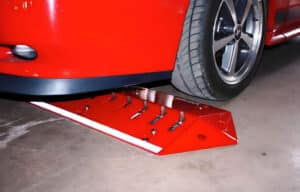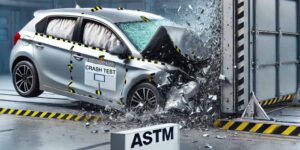Introduction to Products for Traffic Safety and Control on Highways
Traffic safety is essential for maintaining safe roadways and ensuring efficient movement on highways. Whether it’s managing busy intersections, construction zones, or special events, having the right equipment is crucial to keeping traffic moving and reducing accidents. At Highway Signals, we provide top-tier products designed for effective traffic control, management, and highway safety.
In this article, we’ll explore five critical products that enhance traffic safety, ensuring the well-being of drivers, pedestrians, and workers alike.
1. Traffic Barriers: The Backbone of Highway Safety
Traffic barriers, including Jersey Barriers and water-filled barricades, are a critical first line of defense in keeping motorists and workers safe. Made from highly durable materials like polyethylene or concrete, these barriers are designed to withstand high-impact collisions, effectively absorbing energy and preventing vehicles from veering into hazardous areas. Water-filled barricades, in particular, offer the flexibility of being lightweight when empty, making them easy to transport and install. Once in place, they can be filled with water or sand, providing the weight necessary to resist vehicle impact.
Best Practice Tip:
When placing barriers on highways or construction sites, ensure they are spaced evenly and placed at least 10-20 feet from the active work zone. This buffer allows drivers to recognize and react to the barrier without swerving dangerously at the last second. Regular inspections of barriers for damage or displacement are also crucial to maintaining effective traffic safety.
Barriers play a pivotal role in enhancing traffic safety by creating secure perimeters and ensuring smooth traffic control even during peak hours. Whether for temporary or permanent setups, they remain one of the most effective tools for protecting both motorists and workers.
2. Traffic Cones and Channelizers: Key to Efficient Traffic Control
One of the most versatile tools in traffic control, traffic cones are widely used for short-term setups, while channelizers provide a more permanent solution. These products are used in various scenarios—from directing traffic around accidents to marking temporary lane closures during events or roadwork. In fact, a recent study showed that traffic cones played a significant role in reducing accident rates by up to 20% during a large road reconstruction project in Texas.

Traffic cones and channelizers help direct vehicles away from restricted or hazardous areas. They are quick to deploy and essential for creating safe driving lanes during events, road work, or emergencies. By providing clear visual cues, these products contribute greatly to traffic management and traffic safety.
Common Mistake to Avoid:
A frequent mistake made during traffic control setups is not properly spacing cones or using too few for a large area. This can cause confusion among drivers, especially at night or in low-visibility conditions. As a rule of thumb, place traffic cones no more than 12 feet apart in areas with speed limits above 35 mph to ensure clear, consistent visual cues for drivers.
In temporary traffic situations, cones are the go-to solution for preventing accidents and maintaining order. They play a fundamental role in traffic control, making them an essential asset in any highway safety plan.
3. Vertical Panels and A-Frames: Managing Traffic Flow with Flexibility
For more extensive or longer-term setups, vertical panels and A-frames provide a flexible solution for redirecting vehicles or pedestrians. These products are crucial in high-traffic areas such as intersections, parking lots, or construction sites. Vertical panels, with their reflective surfaces, are highly visible in both daylight and low-light conditions, making them an essential tool in traffic management.
Vertical panels and A-frames are highly effective for long-term or movable traffic management solutions. The lightweight, yet durable design allows them to be repositioned as needed, making them ideal for ever-changing construction sites or event setups. Many modern A-frames are built to withstand harsh weather conditions, ensuring long-term use without compromising their effectiveness.
Best Practice Tip:
When using vertical panels or A-frames, ensure that they are reflective or equipped with lights, especially in high-speed or low-visibility areas. This increases the visibility of the setup and reduces the likelihood of accidents. Regularly update signage on A-frames to provide clear, current directions for drivers and pedestrians.
4. Crowd Control Signs: Ensuring Safety in Busy Areas
Crowd control signs serve more than just as simple markers—they guide both vehicle and pedestrian traffic effectively. In busy areas like parking lots, pedestrian-heavy zones, or event spaces, proper signage is essential for preventing confusion and ensuring that both foot and vehicle traffic are safely separated. Proper signage not only improves traffic safety but also contributes to highway safety by guiding traffic efficiently.
In combination with barriers and other control devices, crowd control signs significantly boost traffic safety by reducing confusion and preventing accidents in high-traffic zones. Whether for special events, roadworks, or regular daily traffic, signs help ensure that everyone knows where to go, reducing accidents and maintaining order.
Common Mistake to Avoid:
A common issue with crowd control signage is improper placement, leading to confusion or missed information. Signs should be placed at key decision points—such as intersections or pedestrian crossings—and should be clearly visible from all directions to avoid any miscommunication.
Best Practice Tip:
Ensure that all crowd control signs are placed at eye level and at frequent intervals to reinforce important directions. In parking lots, for instance, signs should clearly indicate pedestrian walkways and crossings to avoid accidents, especially in busy shopping centers or event venues.
5. Traffic Spikes and Accessories: Critical for Access Control
Traffic spikes are designed to control vehicle access in sensitive or restricted areas, such as parking lots or construction zones. These systems ensure
Properly installed traffic spikes and accessories are a vital component of comprehensive traffic control and safety strategies, helping businesses and public authorities manage access and maintain safety standards. Retractable spikes, which can be automatically lowered for authorized vehicles, offer the additional benefit of flexibility in high-traffic or emergency situations.
Regulatory Compliance:
Traffic control products like spikes and barriers are often subject to strict regulatory standards. Ensuring compliance with OSHA regulations and Department of Transportation guidelines is crucial for public authorities and businesses alike. For example, OSHA mandates that any traffic control systems must be inspected regularly and kept in optimal working condition to maintain road safety.
The NHTSA website has other information on regulatory compliance for traffic safety, too.
Conclusion
In today’s fast-paced world, ensuring traffic safety on highways is more important than ever. With products like traffic barriers, cones, and crowd control signs, you can keep traffic moving smoothly and reduce the risk of accidents. At Highway Signals, we offer a wide range of products to meet all your traffic control and traffic management needs.
By investing in high-quality traffic safety equipment from Tamis, you’re not only protecting motorists but also enhancing efficiency on the road. Explore our catalog to find the right solution for your next project and see how our products can help you meet the highest standards in highway safety.




